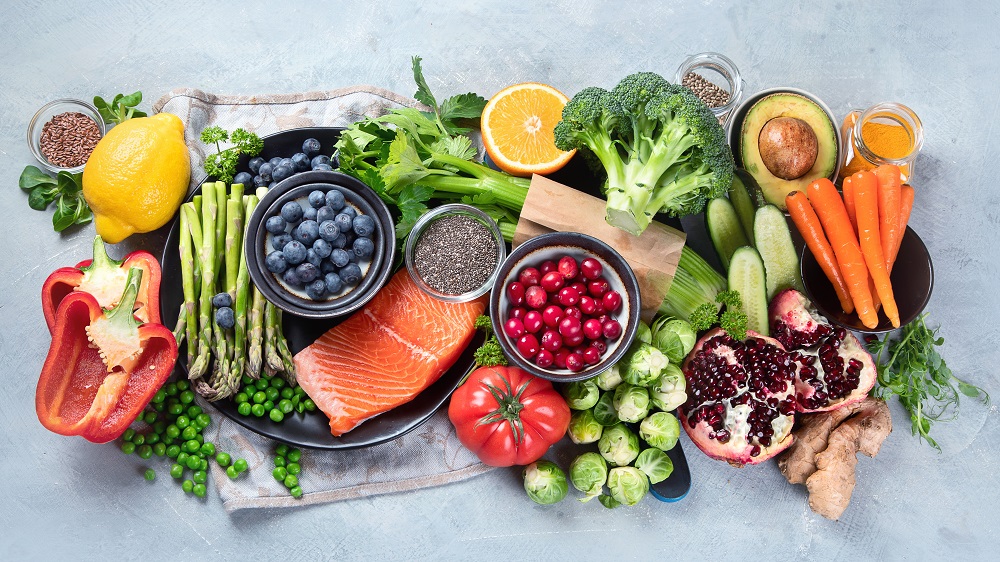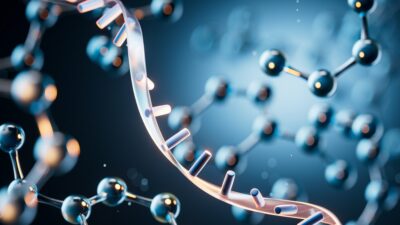Effect of Food Groups on Aging in Older Women
- Some observations were rather unexpected.

A paper published in Age and Ageing analyzed the intake of different food groups and whether they accelerate or decelerate biological age in post-menopausal women [1].
Nutrition and biological age
Biological age is a better indicator of health and aging than chronological age [2]. Multiple measurements can be used to assess biological age; some of the most common include epigenetic clocks. Based on changes in age-related DNA methylation patterns, those clocks can estimate the difference between chronological and biological age, which indicates age acceleration or deceleration.
Since recent studies suggest a small role (10-16%) of heritability in longevity [3, 4], other factors, such as lifestyle and environment, must play significant roles in biological aging. One such factor is nutrition. However, the authors note that data linking dietary interventions and biological age changes is not always consistent, and studies on this topic have many caveats, such as small sample sizes, the use of different epigenetic clocks, or a focus on a single nutrient.
The authors of this study decided to take a different approach. They used a large database and focused on food groups that might affec biological aging. They also used a statistical method emphasizing “exploration and identification, as opposed to methods focused on magnitude and causality.”
The researchers used data on 3,990 women from the Women’s Health Initiative (WHI) cohort, which includes postmenopausal women of different ethnicities based in North America. The mean chronological age of the study participants was 63.3 years. The data included their dietary intake based on the WHI Food Frequency Questionnaire.
What to eat or not to eat
The analysis revealed an association between decelerated aging and the consumption of peaches/nectarines/plums, poultry, nuts, and discretionary fat (solid and oil). On the other hand, consumption of eggs, organ meat, sausages, cheese, legumes, starchy vegetables, added sugar, lunch meat, and fat added after cooking showed an association with accelerated biological aging.
Some of the observations were expected and didn’t surprise the authors; for example, the positive effect of poultry and nuts on aging was unsurprising, as it agrees with previous research [5, 6]. However, some were unexpected or quite complex.
The authors found it interesting that such foods as peaches, nectarines, and plums were associated with decreased age acceleration. While it makes sense that the intake of fruits, which are sources of many vitamins and phenolic compounds with antioxidant properties, would help slow aging, the authors think that there is more to this. Since fruits from this category are not the most commonly eaten, the authors hypothesize that people who consume them would also consume a high amount of other fruits and lead a healthy lifestyle, thus leading to biological age deceleration.
On the opposite side are potatoes and starchy vegetables, which were associated with age acceleration. The authors hypothesize that these vegetables might contribute to age acceleration due to a lack of fiber resulting in higher caloric intake due to less satiety feeling, a relatively high glycemic load leading to negative health outcomes, and reduced antioxidant activity as a result of processing.
The complex role of fat consumption
The authors discuss the negative impact of eggs and organ meat on biological age, which can be linked to their high cholesterol, protein, and fat content. They cited studies that link cholesterol and saturated fat to non-alcoholic fatty liver disease and cardiovascular disease [7, 8, 9]. Additionally, protein is known to activate mTOR, the master regulator of metabolism. Its activation negatively impacts longevity.
Fat added after cooking (such as butter, margarine, sour cream, or oils added to vegetables, beans, rice, and potatoes) was found to be associated with increased biological age. This observation, as researchers add, “aligns with the findings that excessive intake of high-fat foods may contribute to higher body weight and metabolic dysfunction” [10].
However, the longevity-fat consumption relationship seems to be quite complex and nuanced. The authors mention that the association between solid fats and decelerated aging “was rather unexpected.” That food group includes such items as butter and dairy-derived fats along with other foods rich in saturated fatty acids, which are commonly regarded as something that should be minimized. However, the authors discuss that recent research has put that recommendation into question. They cite studies that show no beneficial effects of saturated fatty acid consumption on cardiovascular disease and mortality [11], with some suggesting risk reduction [12].
This conundrum requires more in-depth investigation with a study that would differentiate different types of fats in the analysis; this study did not go that far.
Other variables, limitations, and next steps
The researchers also analyzed variables beyond food and found an association between decelerated aging and diastolic blood pressure, education, and osteoporosis. Accelerated ageing was associated with systolic blood pressure, BMI, waist-to-hip ratio, smoking pack-years, cardiovascular disease, and arthritis. These researchers also found that Native Americans and Asians in this cohort aged more rapidly on average.
While the mathematical model used by the researchers had many strengths, as with every model, it has its limitations. Those include the inability to assess the magnitude of relationships and “the inability to infer causality or direction of relationships.” However, as the authors discuss, while there is still a need to prove the causality between food intake and biological age, the possibility that changes in epigenetic age would cause changes to dietary intake is unlikely.
The authors also point out that other variables not considered during the analysis, such as food processing, eating rate, and income level, might impact the results. They advise that their findings should be investigated in other cohorts to see if these results are particular only to this group. They also advise further research into which food processes, such as additives or smoking meats, impact health.
Literature
[1] Biemans, Y., Bach, D., Behrouzi, P., Horvath, S., Kramer, C. S., Liu, S., Manson, J. E., Shadyab, A. H., Stewart, J., Whitsel, E. A., Yang, B., de Groot, L., & Grootswagers, P. (2024). Identifying the relation between food groups and biological ageing: a data-driven approach. Age and ageing, 53(Supplement_2), ii20–ii29.
[2] Dodig, S., Čepelak, I., & Pavić, I. (2019). Hallmarks of senescence and aging. Biochemia medica, 29(3), 030501.
[3] Kaplanis, J., Gordon, A., Shor, T., Weissbrod, O., Geiger, D., Wahl, M., Gershovits, M., Markus, B., Sheikh, M., Gymrek, M., Bhatia, G., MacArthur, D. G., Price, A. L., & Erlich, Y. (2018). Quantitative analysis of population-scale family trees with millions of relatives. Science (New York, N.Y.), 360(6385), 171–175.
[4] Ruby, J. G., Wright, K. M., Rand, K. A., Kermany, A., Noto, K., Curtis, D., Varner, N., Garrigan, D., Slinkov, D., Dorfman, I., Granka, J. M., Byrnes, J., Myres, N., & Ball, C. (2018). Estimates of the Heritability of Human Longevity Are Substantially Inflated due to Assortative Mating. Genetics, 210(3), 1109–1124.
[5] Connolly, G., Clark, C. M., Campbell, R. E., Byers, A. W., Reed, J. B., & Campbell, W. W. (2022). Poultry Consumption and Human Health: How Much Is Really Known? A Systematically Searched Scoping Review and Research Perspective. Advances in nutrition (Bethesda, Md.), 13(6), 2115–2124.
[6] Zuelch, M. L., Radtke, M. D., Holt, R. R., Basu, A., Burton-Freeman, B., Ferruzzi, M. G., Li, Z., Shay, N. F., Shukitt-Hale, B., Keen, C. L., Steinberg, F. M., & Hackman, R. M. (2023). Perspective: Challenges and Future Directions in Clinical Research with Nuts and Berries. Advances in nutrition (Bethesda, Md.), 14(5), 1005–1028.
[7] Ioannou G. N. (2016). The Role of Cholesterol in the Pathogenesis of NASH. Trends in endocrinology and metabolism: TEM, 27(2), 84–95.
[8] Jung, E., Kong, S. Y., Ro, Y. S., Ryu, H. H., & Shin, S. D. (2022). Serum Cholesterol Levels and Risk of Cardiovascular Death: A Systematic Review and a Dose-Response Meta-Analysis of Prospective Cohort Studies. International journal of environmental research and public health, 19(14), 8272.
[9] Meex, R. C. R., & Blaak, E. E. (2021). Mitochondrial Dysfunction is a Key Pathway that Links Saturated Fat Intake to the Development and Progression of NAFLD. Molecular nutrition & food research, 65(1), e1900942.
[10] Julibert, A., Bibiloni, M. D. M., Mateos, D., Angullo, E., & Tur, J. A. (2019). Dietary Fat Intake and Metabolic Syndrome in Older Adults. Nutrients, 11(8), 1901.
[11] Astrup, A., Magkos, F., Bier, D. M., Brenna, J. T., de Oliveira Otto, M. C., Hill, J. O., King, J. C., Mente, A., Ordovas, J. M., Volek, J. S., Yusuf, S., & Krauss, R. M. (2020). Saturated Fats and Health: A Reassessment and Proposal for Food-Based Recommendations: JACC State-of-the-Art Review. Journal of the American College of Cardiology, 76(7), 844–857.
[12] de Oliveira Otto, M. C., Nettleton, J. A., Lemaitre, R. N., Steffen, L. M., Kromhout, D., Rich, S. S., Tsai, M. Y., Jacobs, D. R., & Mozaffarian, D. (2013). Biomarkers of dairy fatty acids and risk of cardiovascular disease in the Multi-ethnic Study of Atherosclerosis. Journal of the American Heart Association, 2(4), e000092.







